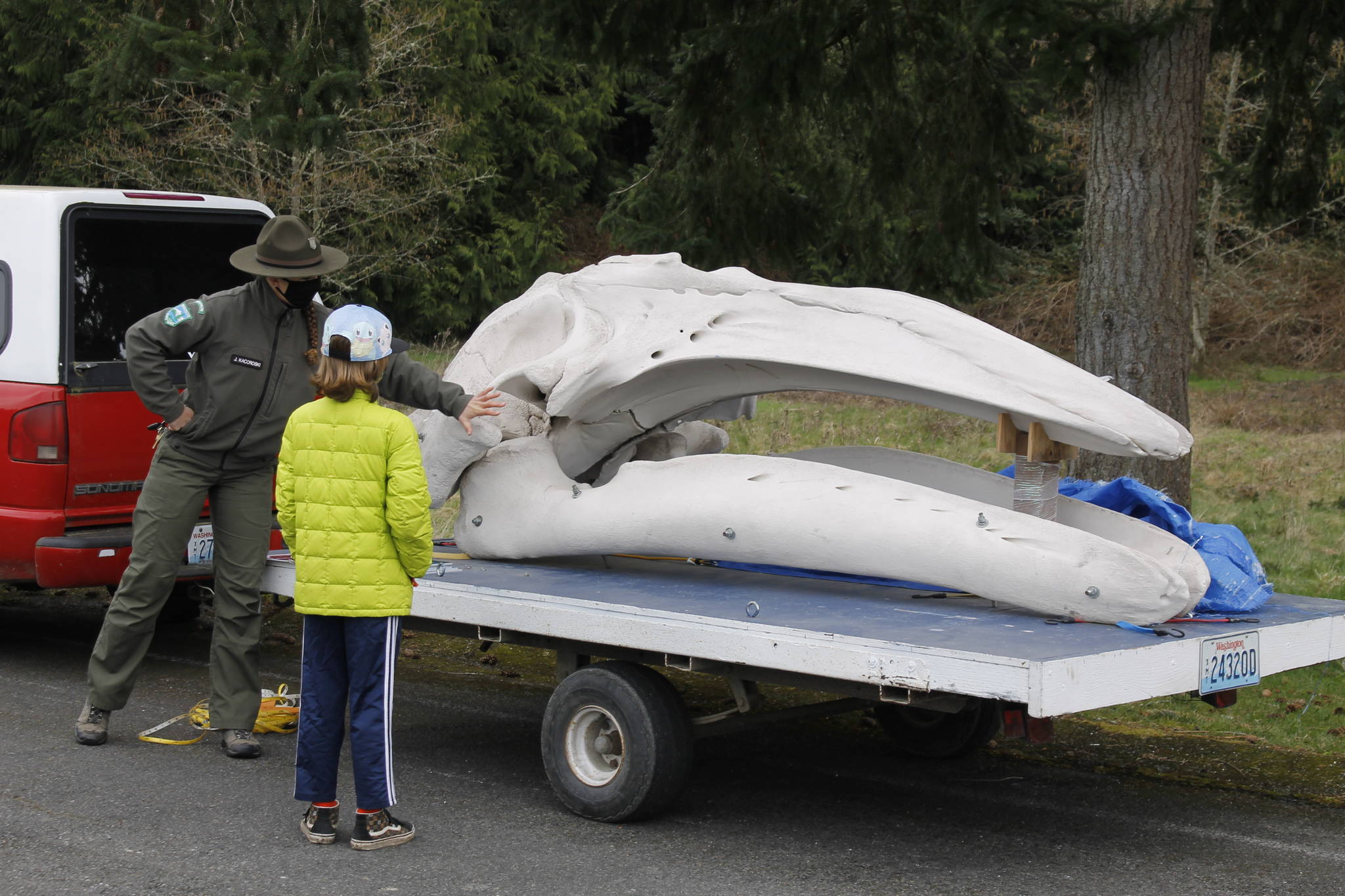Last week, South Whidbey Elementary School students got a taste of what it would be like to live as gray whales.
The pods of third graders played a game mimicking migration patterns of the gray whale, held baleen in their hands while learning about feeding methods and took a look at a massive skull of the cetacean that was hauled to the school on Thursday by Washington State Parks staff.
The activities were all part of a larger project in which third graders are exploring the differences between gray whale and Southern Resident Orca populations.
This year, the school district, in partnership with Port Townsend’s Northwest Maritime Center, received a grant focusing on bay watershed education training.
Each grade level at the elementary school is currently seeking to answer an environment-themed question.
“We want to connect kids with their local environment, so it’s place-based education,” said Lori O’Brien, a third grade teacher.
Third graders have been busy researching the habitats, prey and challenges of both whale species, as well as their interaction with the Salish Sea. They have also been learning about ocean pollution and have written opinion essays about whether or not plastic bags should be banned.
“Our hope is that the kids become whale-wise, so that they can make recommendations to friends and family and community so that other people can be whale-wise,” O’Brien said.
During the event on Thursday, O’Brien held up a variety of household items, from plastic straws to reusable bags to paper napkins, and asked her students if the items were “whale-wise” or not.
Kids also got up close and personal with an adult male gray whale skull, which was nearly 10 feet in size.
The skull was brought by Washington State Parks Interpretive Specialist Joy Kacoroski and Americorps Volunteer Elizabeth Bentz.
In the past, students have traveled to Deception Pass State Park to participate in similar activities. But because of the ongoing pandemic, parks staff brought the field trip to the kids.
“I think students have a huge impact on their families and their local communities and the conversations that they’re having around dinner, and that kind of stuff,” Kacoroski said.
O’Brien said students haven’t been able to stop talking about new gray whale facts they learned from Kacoroski, such as the wax the enormous mammals have built up in their ears that can tell scientists their life history.
Students have also been working on a service project.
For the third graders, they raised Coho salmon, which were released Friday into Maxwelton Creek.
The 227 small fry previously occupied a 55-gallon tank in the elementary school.
When the salmon are fully grown, in about a year, they will head out to the ocean and some will become food for Southern Resident Orcas.
In about four years, others will return to Maxwelton Creek to spawn.
“It’s their service project to help with orca populations and help with the ecosystem, to release the salmon that they’ve been raising,” O’Brien said.
She has been raising salmon with her classes for the past eight years.
Students used cups to transfer the salmon to the stream on Friday. Haikus were read aloud to the fish while they were being released into the wild.
“I’ve noticed over the years that kids really want to say something or have some kind of ceremony when they go down there,” O’Brien said.
It’s all part of the elementary school’s “farm, forest and sea” focus.
O’Brien said the school district will be reapplying for the same grant next year and she hopes the environmental education will continue as a result.



